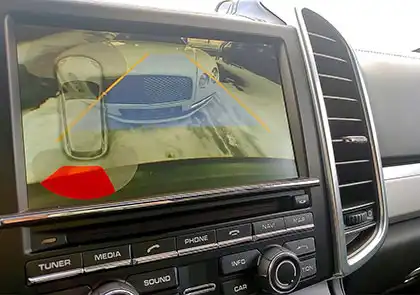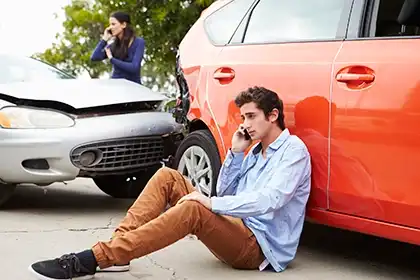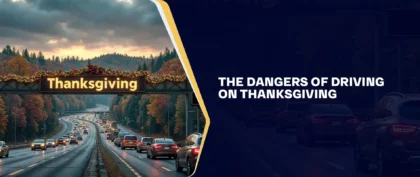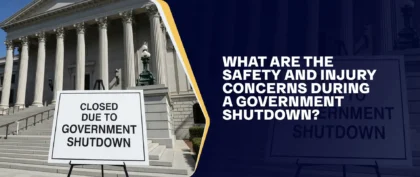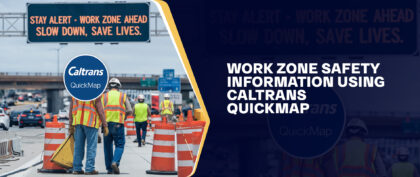Table of Contents
Vehicle accidents are a significant concern in the United States, affecting millions of individuals and families each year. According to the National Highway Traffic Safety Administration (NHTSA), over 42,000 fatalities and millions of injuries are reported annually due to motor vehicle crashes. The consequences of these accidents go beyond physical harm; they also impose emotional and financial burdens on victims and their families.
What drives these unfortunate incidents? Among the factors contributing to vehicle accidents, human error is, by far, the leading cause. Research indicates that approximately 87.7% of all traffic incidents in the U.S. are attributed to human error.
This staggering statistic underscores the integral role that driver behavior plays in maintaining road safety. While environmental factors such as road maintenance and weather conditions can influence accident rates, drivers’ decisions and actions often lead to dangerous situations.
The Top Cause Of Vehicle Accidents In The U.S.
According to the Proceedings of the National Academy of Sciences (PNAS), human error is the leading cause of vehicular accidents, with driver-related factors (driver error, distraction, and impairment) accounting for 87.7% of crashes.
In 2022 alone, 5,930,496 road accidents were reported, with 42,514 fatalities and an estimated 2,382,771 injuries. While the National Highway Traffic Safety Administration (NHTSA) promotes using driver assistance technologies to minimize crash rates, it cannot eliminate the risks caused by poor driving judgments.
Drivers need to control their vehicles, stay aware of their surroundings, and navigate cautiously to their destination. To do this, they must simultaneously consider various factors, from traffic signals to other vehicles’ movements, while making quick decisions. In such a situation, errors can occur, especially when distractions influence their skills and choices.
Here’s a closer look at the different factors that cause motor vehicle accidents:
Driver-Related Factors That Lead To Vehicle Accidents
You might wonder, “What is the most common cause of traffic accident deaths?” Many vehicle accidents stem from actions and decisions made by drivers on the road. Various behaviors, from spur-of-the-moment choices to habits developed over time, can increase the likelihood of collisions.
These driver-related factors contribute to vehicle accidents:
Driving Under The Influence (DUI)
In the United States, alcohol remains a significant factor in traffic fatalities, accounting for 13,524 deaths in 2022. Intoxicated driving is responsible for 32% of all traffic deaths in the country. The legal limit for blood alcohol concentration (BAC) in the U.S. is 0.08 grams per deciliter (g/dL). Drivers with a BAC of 0.08% to 0.30% may experience:
- Difficulty recognizing hazards and impaired judgment.
- Slower reaction times and delayed thinking.
- Mood swings, nausea, vomiting, and loss of balance.
Drugs, whether legal or illegal, also contribute to impaired driving. Some prescription and over-the-counter medications can cause side effects such as drowsiness, dizziness, or blurred vision, which makes driving unsafe. Moreover, substances such as marijuana, opioids, and stimulants can seriously diminish a driver’s cognitive functions and physical abilities. A study conducted across seven Level 1 trauma centers that cater to extensive service areas found that 55.8% of injured or killed road users tested positive for one or more drugs.
Drivers cannot operate their vehicles safely if they are impaired by alcohol or drugs. When a driver’s capacity to make informed decisions and adjust to changing conditions is compromised, the chance of an accident increases. Drivers must remain vigilant about their mental state and the effects of any substances they consume before getting behind the wheel.
Victims of these incidents may seek guidance from drunk driving accident victim lawyers, who can explain legal rights and options for pursuing compensation.
Dangerous Driving Behaviors
Even when completely sober, drivers can end up in a vehicle accident due to dangerous driving behaviors. These can be attributed to overconfidence, lack of experience on the road, failure to observe road safety rules, and even impulsive actions that lead to bad situations.
The following are typical examples of dangerous driving behavior:
- Speeding — Driving too fast severely hampers one’s ability to navigate a curve in the road safely. Statistics show that speeding-related accidents led to about 10,922 fatal crashes in 2022.
- Distracted Driving — The NHTSA defines distracted driving as any activity that takes attention away from safe driving, such as texting, eating, talking to passengers, or adjusting the car’s controls. According to reports from the same agency, distracted driving resulted in 3,308 fatalities in 2022.
- Wrong-Way Driving — The American Automobile Association (AAA) found that wrong-way driving accidents are more deadly because they are usually head-on collisions. These crashes tend to have more forcible impacts.
- Tailgating — Tailgating leaves drivers with barely enough distance and time to react if the vehicle in front of them makes a sudden stop. Tailgating may lead to rear-end accidents. The results can be quickly fatal if these collisions happen at high speeds.
- Swerving — Making unsafe lane changes can disorient other drivers, causing them to make risky maneuvers to avoid a collision.
- Overcorrection — Oversteering can cause the vehicle to move erratically, posing a danger to the driver, their passengers, and the occupants of other vehicles on the road.
- Running Red Lights — In 2022, red light running accidents resulted in 1,149 fatalities, highlighting these incidents’ frequency and potential timelines. Surviving family members may consult red light accident lawyers to understand their legal options.
- Failure to Yield — When a driver fails to yield, other drivers nearby may be unprepared for this unexpected situation, leading to vehicle collisions. The National Safety Council (NSC) reported that failure to yield accounted for 6.9% of fatal crashes in 2022.
Road Rage
Some drivers make mistakes, but others drive aggressively and dangerously on purpose. According to the data analyzed by the NSC, only 1% of vehicles involved in fatal crashes in 2022 were associated with documented road rage incidents.
Road rage is characterized by aggressive or violent behavior by drivers, often fueled by stress, irritation, or assumptions about other drivers’ behaviors. Unlike unintentional errors, road rage involves deliberate, reckless driving behaviors, such as tailgating, excessive speeding, and aggressive lane changes. These behaviors raise the risk of collisions in many settings, from highways to driveway accidents, putting everyone nearby at risk. Victims of such incidents may turn to vehicle accident lawyers to learn about their legal options.
Driver Medical Issues
Certain medical conditions, like dementia, diabetes, vision impairments, and involuntary episodes of unconsciousness, can affect a person’s ability to drive safely. These conditions can impact a driver’s reaction time, awareness, and overall vehicle control, increasing the risk of accidents.
When an accident occurs due to a driver’s medical condition, it can be challenging to assign blame. However, California does not prohibit individuals with certain medical conditions from driving, provided they report their condition to the Department of Motor Vehicles (DMV). This means that drivers with health conditions that could impair their driving ability may still be allowed to operate vehicles on the road.
Environmental Elements That Increase The Risk Of Vehicle Accidents
While many of the above factors can be mitigated by careful and responsible driving, some risks are beyond the driver’s control. However, with the proper precautions, even external factors can be managed to minimize accident risk.
Here are some of the environmental factors that may contribute to vehicle accidents:
Night Driving
Driving at night can be more dangerous than daytime driving. The NHTSA reported that in 2022, 22,895 people died in nighttime crashes, about 17% more than the 19,293 fatalities in daytime collisions.
Here are some of the most common causes of nighttime vehicle accidents:
- Poor Visibility — Some drivers struggle to see clearly at night, especially those with vision issues. Poor visibility makes spotting road conditions, other vehicles, and potential hazards difficult.
- Heavier Traffic — Increased traffic flow is standard during evening rush hour. Navigating through heavy traffic can make it difficult for drivers to maintain safe operating conditions, as they must constantly adjust their speed and position relative to other vehicles.
- Road Hazards — Road construction zones present various hazards, including onsite workers, large trucks navigating the area, changing traffic patterns, and new signage that drivers must read and follow. These factors can create a challenging driving environment, particularly at night when visibility is reduced.
- Other Impaired Drivers — Approximately one-third of all traffic deaths involve a drunk driver. In addition to alcohol, the use of prescription medications and other drugs before driving can dramatically increase this figure. Impaired drivers are more common on the road after dark, mainly between midnight and 3 a.m. on weekends.
Weather-Related Hazards
Rain, sleet, hail, snow, fog, dirt, and a combination of those elements can significantly affect driving conditions. NHTSA’s 2022 statistics show that 8,191 fatal vehicle accidents were attributed to adverse weather, 386,101 incidents resulted in injury, and about 1,070,992 resulted in property damage.
Bad weather can complicate driving conditions. Rain, mud, and ice create slippery and hazardous surfaces, making it challenging for drivers to maintain control. Visibility can also be severely compromised during heavy rain, snow, or fog.
During such conditions, drivers must reduce their speed and exercise extreme caution. They may still be held accountable if they neglect to take the appropriate safety measures to prevent rain accidents and other collisions due to weather-related factors.
Man-Made Road Hazards
Dangerous road conditions contribute to fatal accidents, especially when drivers are unaware of their surroundings. Potholes, uneven surfaces, and broken curbs can cause drivers to lose control of their vehicles.
Here are some of the common road hazards that drivers must be aware of:
- Physical Obstructions — Poorly fitted maintenance hole covers might lead to accidents if drivers don’t notice them in time. Moreover, misplaced traffic cones and road barriers obstruct lanes, forcing drivers to make sudden maneuvers.
- Poor Road Conditions — Crumbling road surfaces and poorly leveled roads make it more difficult for drivers to operate smoothly and safely. Drivers can lose control of their vehicles when the road surface changes due to a drastic change in traction, raising the risk of left-turn accidents if vehicles skid into oncoming lanes.
- Dangerous Road Designs — According to the Federal Highway Administration, more than 25% of fatal crashes occur in horizontal curves. Drivers may fail to slow down adequately or underestimate the sharpness of the turn, leading to car accidents, rollovers, or vehicles veering off the road.
- No Road Signage or Lane Markings — The lack of road signs and lane markings can lead to confusion and uncertainty for drivers. If they struggle to determine their position on the road or fail to understand traffic rules, it may result in unsafe lane changes, sudden stops, or collisions with other vehicles.
- Construction Zones — Lane closures, detours, and moving equipment can create significant hazards for drivers, disrupting normal traffic flow and requiring quick adjustments. These risks often lead to highway construction accidents, where drivers must react quickly to sudden changes.
Some Suggestions On What To Do After A Vehicle Accident
No one can predict when a vehicle accident will occur, but you can always prepare for it. Knowing the proper steps can help you stay calm and organized if an incident occurs. Here are some recommendations on what you can do to protect your rights:
- Check yourself for any injuries immediately after the accident. If you’re hurt, call 911 without delay to ensure you get prompt medical attention.
- Move your vehicle to the side of the road and turn on your blinkers. Find a safe spot while waiting for emergency services to arrive.
- When the police arrive, provide a factual account of what happened. Avoid admitting fault or speculating about the cause of the accident.
- Collect all drivers’ contact details, insurance information, and license plate numbers. Also, take photos of injuries and damaged vehicles.
- Seek the help of a medical professional to get checked for any hidden injuries. You can prevent complications and provide the necessary documentation for your insurance claim by seeking treatment promptly.
- Contact your insurance provider. Follow your agent’s instructions for reporting the accident.
- Avoid saying anything unnecessary to the other party’s insurer, and don’t accept any settlement offers or agree to provide a recorded statement before consulting a car accident attorney.
- Keep all accident-related paperwork, including police reports, medical bills, and insurance information, in one place. This documentation will be essential if you pursue a claim or lawsuit.
- Contact Arash Law. We provide a free initial consultation, during which our car accident lawyers can help evaluate the strengths of your case and assist you in filing a personal injury claim. Call us at (888) 488-1391 for more information.
Statistics About Vehicle Accidents In The U.S.
With millions of vehicles sharing U.S. roads daily, accidents are almost inevitable. According to the NSC, there were 46,027 motor vehicle deaths in 2022. In the same year, the NHTSA reported 5.93 million vehicle accidents. Tragically, 42,514 of these incidents resulted in fatalities.
Here are the top three states with the highest number of fatal vehicle accidents:
- California saw 4,428 fatal crashes.
- Texas reported 4,408 fatalities.
- Florida recorded 3,530 deaths.
Of the total traffic fatalities, 41% (17,283) occurred in rural areas, while 59% (25,023) occurred in urban areas. The remaining cases were not classified into either category. Call car accident lawyers immediately if you or a loved one has been injured in a vehicle collision. They can help you understand your rights and pursue the indemnity you may be entitled to.
Tips To Avoid Vehicle Accidents
A safe, defensive driving style can reduce the risk of vehicle collisions. Being alert, giving yourself space, and adapting your speed to the conditions are the most important steps to staying safe on the road. Here are some practical tips to help reduce your risk of an accident:
- When driving, maintain your focus and look 10 seconds ahead on the road to give yourself enough time to react to any potential hazards, changes in traffic, or road conditions.
- Avoid staying in other drivers’ blind spots to ensure you’re visible to them.
- Keep a safe distance from other vehicles, especially large trucks or buses.
- When merging onto freeways, yield to vehicles merging from other lanes.
- Maintain space between your car and parked vehicles to prevent unexpected collisions.
- Look both ways for a stop sign or red light at an intersection.
- Check your rearview and side mirrors frequently, and keep your head turned when changing lanes.
- Use high beams on dark roads when allowed, but be cautious not to blind other drivers.
- Slow down and be cautious when approaching intersections and navigating sharp curves.
- Drive slower in poor conditions. Reduce your speed by 5-10 mph on wet roads, half on packed snow, and five mph or less on icy roads.
Frequently Asked Questions
What Type Of Vehicle Accident Results In The Most Fatalities?
In NSC’s 2022 overview report, collisions between other motor vehicles result in the highest fatalities compared to pedestrian accidents, collisions with fixed or other objects, and other collisions. Approximately 19,600 fatalities, or 42.6%, were attributed to this type of crash.
Here are the types of motor vehicle collisions ranked by fatality rates:
- Angle crashes account for 44.9% of deadly accidents.
- Head-on collisions make up 29.6% of fatal crashes.
- Rear-end accidents contribute to 17.3% of traffic fatalities.
- Sideswipes and other two-vehicle collisions account for 8.2% of deadly incidents.
What Type Of Car Gets Into The Most Accidents?
Certain types of cars are involved in traffic accidents more frequently than others, usually due to popularity, how they’re used, and driver demographics. Here are the types of cars that are most often involved in vehicle collisions:
- Toyota Camry was damaged in 1,197 accidents.
- Honda Accord was responsible for 1,166 incidents.
- Honda Civic was involved in 1,078 collisions.
Which Driver Is Likely To Be Involved In Vehicle Accidents?
Looking at who is most often involved in car accidents can help us understand the factors that increase crash risk. Analyzing incident statistics by age, gender, and other characteristics reveals important patterns about who is more likely to experience serious or fatal collisions.
Here are the demographics of people most often involved in vehicle collisions:
- Gender — In 2022, data from the NHTSA shows that men were involved in far more fatal vehicle accidents, with 43,582 fatalities compared to 14,719 for women and 1,747 for unknown gender. While men are responsible for the majority of collisions, women frequently suffer more severe injuries when involved in a crash.
- Age — Accident data show that certain age groups are involved in vehicle crashes more often than others. This reflects their diverse driving experience, physical abilities, and other risk factors. Here are the different age brackets that contribute to vehicle collisions:
- 16 to 19 — This age group accounts for 9.1% of all collisions and 6.1% of fatal crashes despite only representing 3.6% of all licensed drivers.
- 25 to 54 — In 2022, drivers in this age range were involved in 50.4% of fatal crashes, 51.75% of non-fatal injury crashes, and nearly half (49.6%) of property damage-only crashes.
-
65 and Above — Older drivers contributed to 8.8% of fatal crashes and 7.1% of all collisions. In 2022, this group was involved in 2,596 fatal crashes, 115,412 injury-causing accidents, and 247,073 property damage-only crashes.
Research reveals that people become more prone to getting into vehicle accidents at this age due to several factors, including physical, cognitive, or visual impairment and possibly side effects from taking medication.
Why Does Fault Matter In A Vehicle Accident?
Fault matters in a vehicle accident because it determines who is responsible for covering the costs of damages and injuries. When an incident occurs, the parties rely on their own or the other party’s insurance to cover medical bills, automobile repairs, and other expenses.
If you sustain an injury in a vehicle collision and believe you have a viable claim, consult a car accident lawyer. An experienced attorney knows how to investigate and interpret incident details, helping to prove fault and build a solid case for compensation.
Is It Worth Hiring An Attorney After A Vehicle Accident?
After an accident, you might wonder, “Do I need a personal injury lawyer?” The answer depends on your situation. However, hiring a lawyer offers a lot of benefits, especially if the crash led to serious injuries, costly damages, or complicated liability issues.
A lawyer who handles car accidents can help you evaluate if another driver’s negligence or recklessness caused the collision and assist you in seeking compensatory damages. They will gather evidence, build a compelling case, and negotiate with insurance companies for a fair settlement of your losses.
At Arash Law, we bring years of combined experience in handling car accident claims. Our law firm has successfully represented numerous clients in car accident cases, including obtaining settlements and verdicts. Past results do not guarantee future outcomes.
What Happens When Someone Dies In A Vehicle Accident?
When a loved one dies in a vehicle accident, California law allows surviving family members to seek justice and compensation through a wrongful death lawsuit. This can help the family recover from their financial and emotional losses. The at-fault driver and their insurance company may bear responsibility for these damages.
Fatalities are especially common in large-scale crashes, such as moving truck accidents and commercial vehicle accidents, due to the size and weight of these vehicles. The impact often results in severe injuries or loss of life, leaving families to cope with overwhelming consequences.
A wrongful death claim can be filed by the victim’s spouse, domestic partner, children, or grandchildren. In some cases, other minors who are dependent on the victim, as well as individuals who would inherit in the absence of a will, have the right to file a lawsuit.
According to the California Civil Code, the family generally has two years from the date of the accident to file a wrongful death claim. This time limit is called the statute of limitations. If the victim has damaged property, they have three years to file a claim. Other exceptions can shorten or extend the deadline. For instance, when the defendant is a government entity, you must file an administrative claim within six months of the incident.
Seek the help of experienced wrongful death lawyers and let them assist you in filing a claim. Their goal is to seek all available damages in a wrongful death case to cover the victim’s hospital bills, burial and funeral expenses, pain and suffering, and other losses.
Injured In A Vehicle Accident? Our Lawyers Can Help You Seek Compensation
If you’ve been injured in a vehicle accident, the experience can be traumatizing. It can disrupt your life, from physical health to financial stability and emotional well-being. Having legal support can help you navigate your personal injury case effectively.
Our collision lawyers at Arash Law are committed to advocating for accident victims. As a California-based personal injury law firm, we are dedicated to pursuing the damages that may be available to you. Our team works to help protect your rights, giving you the support you need to move forward.
We handle various types of motor vehicle crashes, including accidents involving trucks, rideshares, and buses. We also have lawyers who work on bicycle accidents and motorcycle collisions. Our firm also handles other types of personal injury claims, including slip-and-fall incidents, workplace accidents, product liability cases, dog bites, and more.
Call us today at (888) 488-1391 or complete our “Do I Have A Case” form here. We represent clients throughout California, including Los Angeles, Sherman Oaks, Riverside, San Diego, San Francisco, Fresno, Sacramento, and San Jose. If you can’t come to our office, we’ll meet you wherever you are in the state. We are available 24/7.



